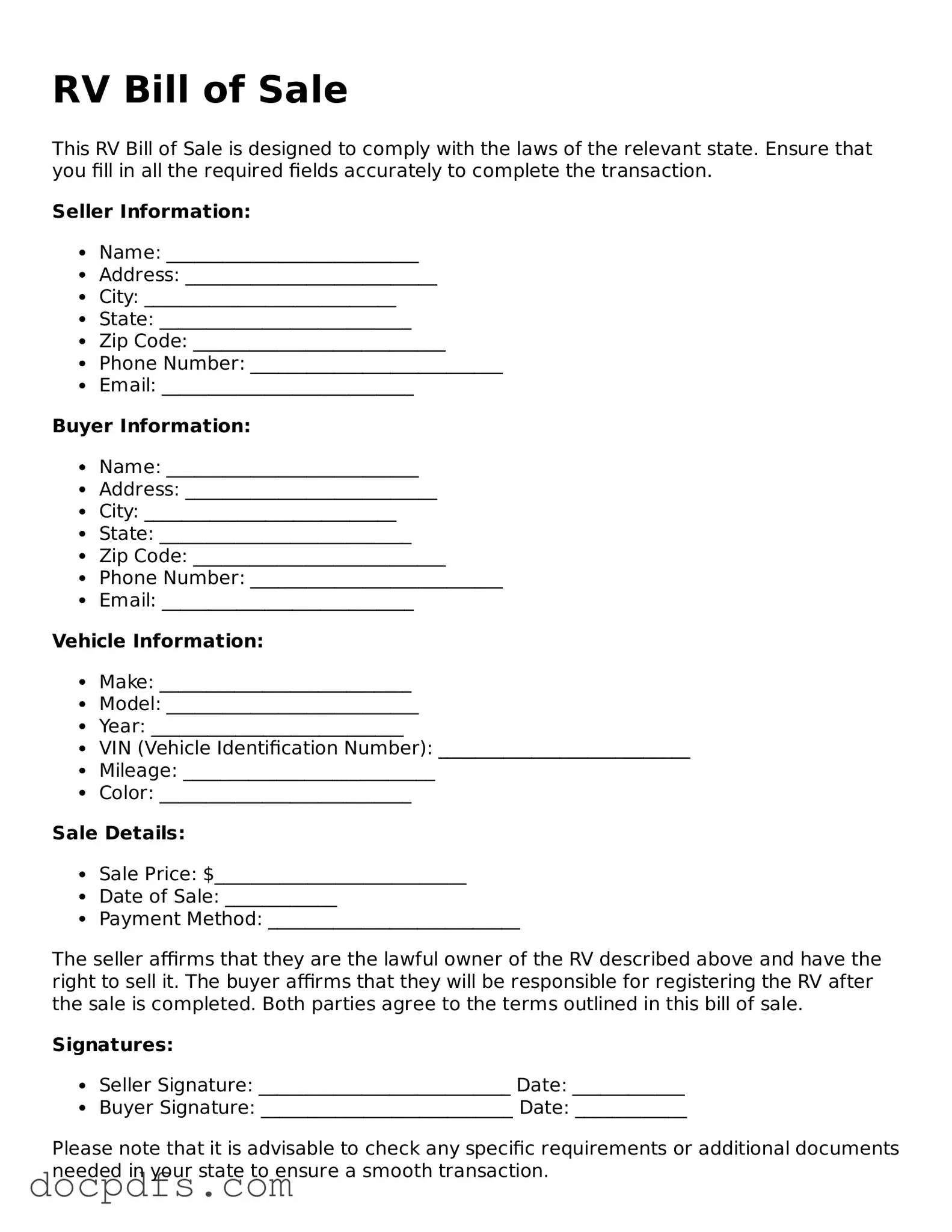When purchasing or selling a recreational vehicle (RV), having a properly executed RV Bill of Sale form is essential for both parties involved in the transaction. This document serves as a written record that details the transfer of ownership from the seller to the buyer. It typically includes vital information such as the names and addresses of both the buyer and seller, a description of the RV including its make, model, year, and Vehicle Identification Number (VIN), and the sale price. Additionally, the form may outline any warranties or guarantees, as well as any terms related to the sale, such as payment methods and conditions for the transfer of the vehicle. By documenting these key details, the RV Bill of Sale not only protects the interests of both parties but also provides legal evidence of the transaction, which can be crucial for registration and title transfer purposes. Ensuring that this form is accurately filled out and signed can help prevent disputes and misunderstandings in the future, making it a critical step in the RV buying and selling process.
